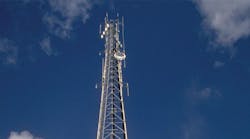Since my house was without power for 13 days in the aftermath of Superstorm Sandy, I thought I would also give my take on the best (and worst) performers during this period as they affected my particular situation.
Besides the power outage, my family didn’t suffer any damage or misery. A big old maple tree in front of my house swayed and lifted the ground at its roots about half a foot, but it held steadfastly, unlike many other trees in my neighborhood that came crashing down. It also endured a blanket of wet snow from a Northeaster a week later, but again held firm and did not come down. I’m very thankful for that.
Nevertheless, living without power for nearly two weeks makes you think about everything around you, especially on the days when the outdoor temperature is at or near the freezing level. So without further ado, I’ll give you my thoughts on the best performers and then some of the worst.
Reliable Technologies
The best performer throughout both storms was Verizon Wireless. In an age where you can’t count on your VoIP lines to work without power, Verizon’s cell-phone service was a lifesaver. Keeping cell phones charged was a challenge, but people were figuring out all sorts of ways to do that.
This brings me to my second winner, the family car. For people without generators, like myself, my two cars became an invaluable source of power to charge my cell phone. One of my cars, a Jeep Patriot, has a built-in 110-V receptacle, so I also was able to charge my laptop. In addition, I have a 3G USB dongle for my laptop, so that provided me with e-mail and Internet access. Thanks again to Verizon Wireless for keeping its cell towers working during the power outage.
Another big winner for me was the LED, the light source for both a lantern and a three-way flashlight. The lantern, powered by four D batteries, was a gift from my daughter-in-law last Christmas based on her experience losing power after Hurricane Irene last year. I didn’t think much of this L.L. Bean 10-Day Camp Lantern when we first got it, but I pulled it out immediately after the lights went out. Two weeks later, it was still going strong on the same set of batteries.
The flashlight not only has the usual light source at its head, it also has a bank of LEDs on its side, which glows brightly when you stand the flashlight on its head. This flashlight did its job on just four AA batteries for the entire time as it travelled with me from room to room.
Yet another winner for me was natural gas. We use gas to heat our home and for our stove. Without electricity our burner was down, so no heat. But although the electric ignition on the stove wasn’t working, we were able to use matches to get the burners started. Cooking food wasn’t a problem, but after a while we had to empty our refrigerator and freezer and buy perishable food on a day-to-day basis.
The rock-solid gas supply also got me thinking about generators. I don’t have a gasoline powered generator and don’t think I will get one. The shortage of gasoline that occurred in the storm’s aftermath made it very difficult to keep generators powered. On the other hand, I’m seriously thinking about getting a generator that can be powered by natural gas. I’d like it to be fed directly from the gas pipes that supply my burner and stove and want a permanent installation that turns on as soon as a power outage occurs. I’m also thinking more seriously about alternative energy sources such as solar and wind.
The Big Loser
The Long Island Power Authority was the big loser, as it was ill prepared for a storm of this magnitude. Our local newspaper, Newsday, detailed some of LIPA’s failings, including ignoring a 2006 recommendation to replace an outdated outage management system that runs on a 25-year-old mainframe computer running COBOL. The article also pointed out that instead of smart phones or tablets to input data or receive maps, crews relied on paper maps and pencils.
LIPA board member Neal Lewis said debt from the ill-fated Shoreham nuclear plant has been a “constraining factor” in LIPA’s ability to spend money to make necessary upgrades. The Shoreham plant was first proposed in 1965 and finally went by the wayside in 1989 after incurring $6 billion in debt!
The key takeaway is that LIPA cannot and probably will not ever be prepared to deal with the effects of a giant storm in a timely manner. So the smart, albeit costly, thing for homeowners like myself to do is to invest now in energy alternatives to work with the grid, but be independent of it if necessary.
The other loser in the superstorm is Cablevision, my triple-play provider on Long Island. Whereas a company like Verizon Wireless, which has roots in the former AT&T, understands the need to provide reliable communications during calamities, Cablevision is apparently okay with hanging its customers out to dry with regards to phone and Internet service as soon as power goes down. So how do you make an emergency call? The lesson here is to make sure you have a cell phone for communications and a way to charge it.
